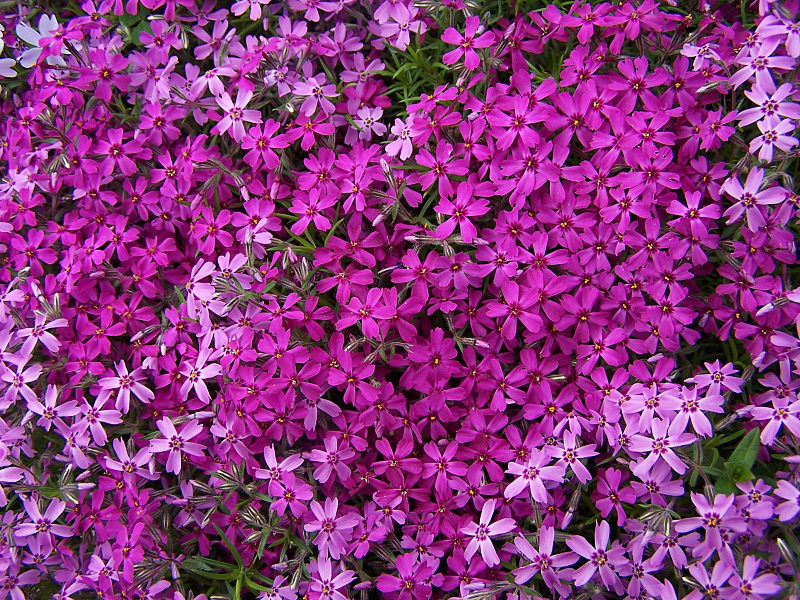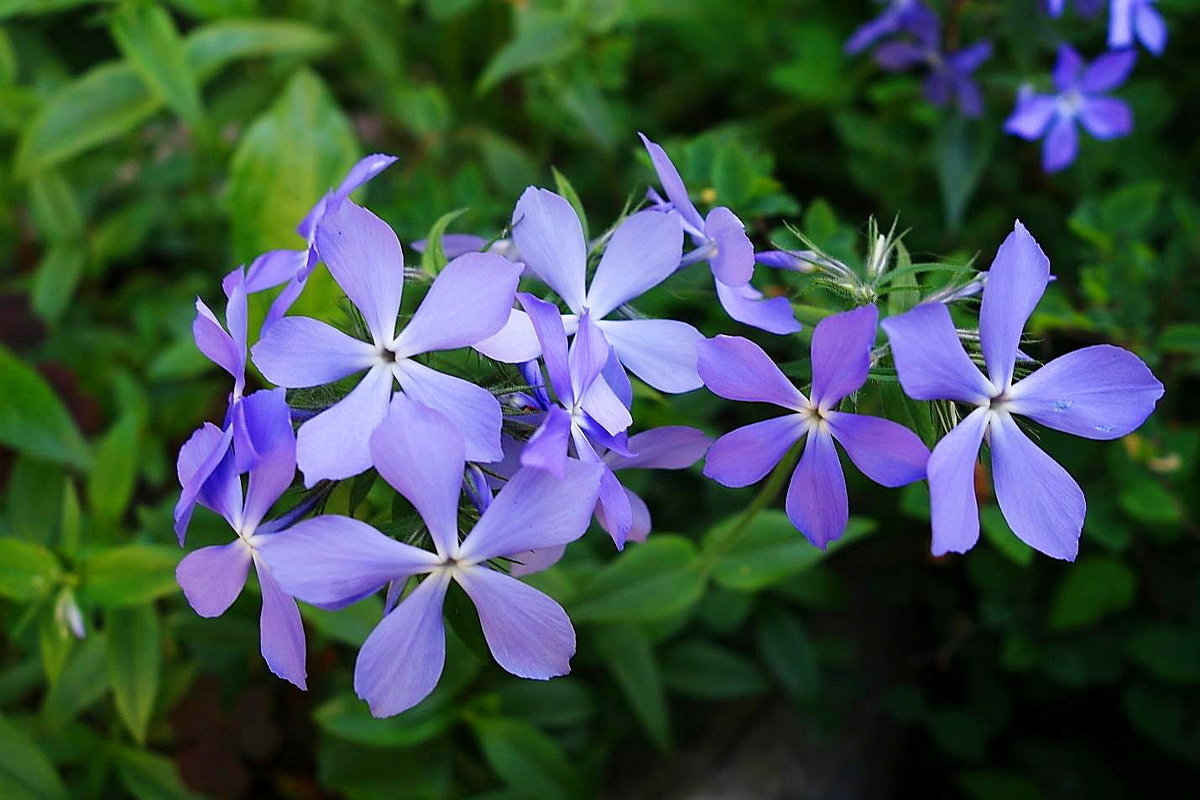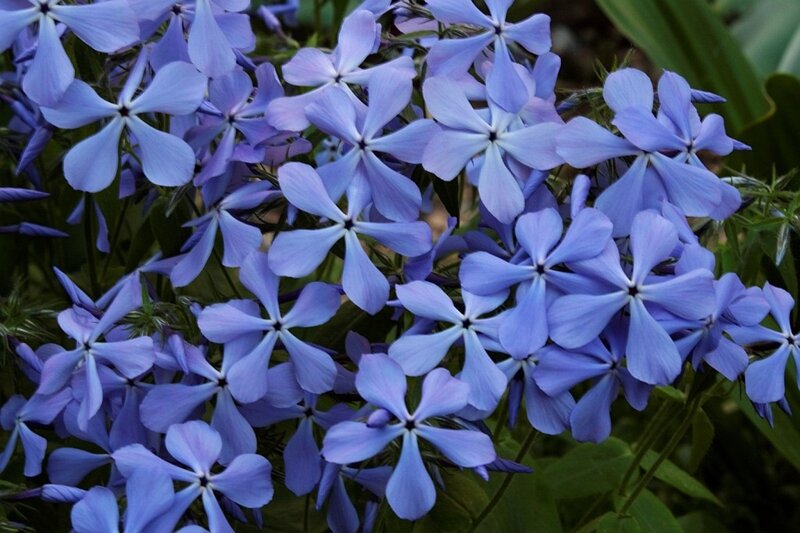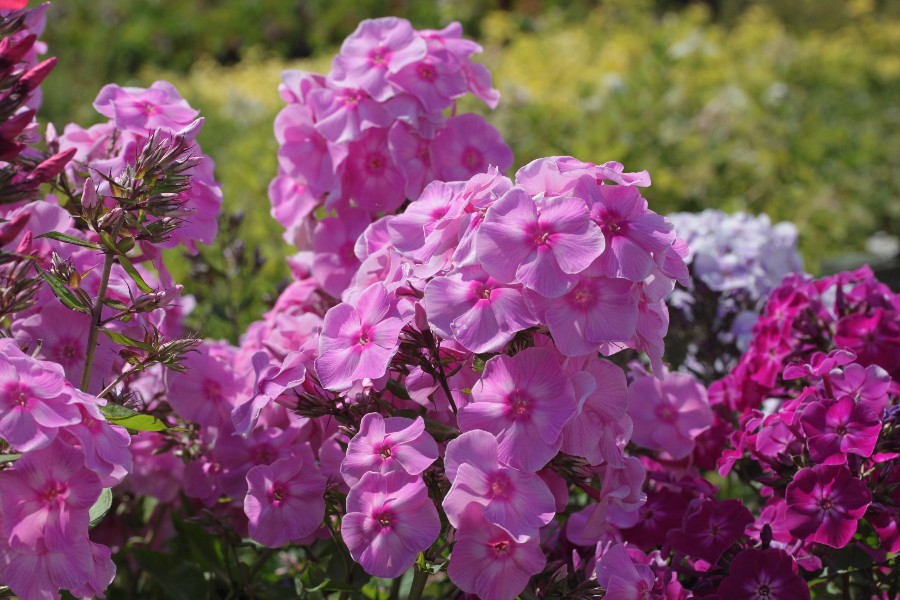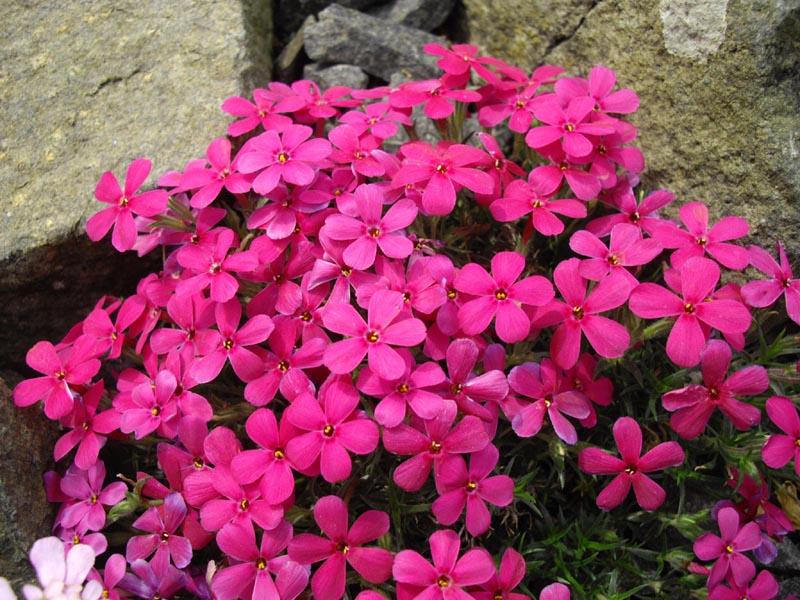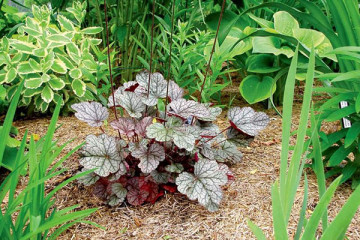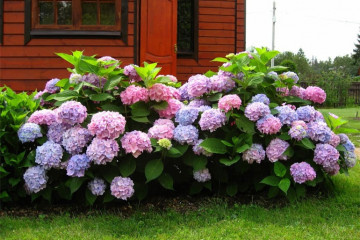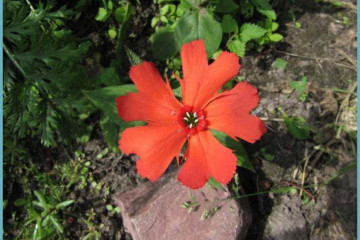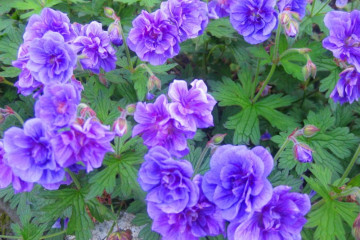Perennial phlox: planting and care in the open field
Content:
- Brief description of the species and popular varieties
- When phlox perennials bloom
- Features of growing phlox as a perennial garden culture
- Care in the garden from the moment of planting in the open ground
- What problems do gardeners have with growing phlox
- Why perennial phlox do not bloom
- Diseases and pests
Perennial phloxes are ornamental plants with brightly colored inflorescences. They have a strong scent. The first variety was developed in North America. Initially, the inflorescences were only scarlet, then hybrids appeared. There are many different varieties with a blue, pink, raspberry, purple hue.
Brief description of the species and popular varieties
Plants grow in the form of a small bush from 10 cm to 1.5 m in height. Stems are straight and even. The leaves are oval, bright green. The inflorescence has many flowers, up to 90 pcs. They are elongated in the form of a tube, have five petals.
The most popular varieties are below.
Subulate
The height of the bush reaches 40 cm. They have many shoots. The leaves have a narrow needle-like shape.
Flowering occurs in mid-spring, the bushes are abundantly covered with inflorescences. They are white, purple, pink, purple.
The plant can be grown in gardens, flower beds, lawns. The bushes creeping along the paths look good. In care, the view is undemanding. Problems can only arise with reproduction. To do this, you need to choose a certain time of the year for the flower to survive.
Spread out
Another name is Canadian, or friable phlox. The plant is undersized. It has lilac or blue flowers. Inflorescences in the form of a scutellum. At the base, the petals are narrowed, widened at the edges. Flowering occurs in late spring, early summer. The maximum height of the bush is up to 40 cm.
Habitat - wet meadows. It is found in the wild only in North America. In gardening, perennial low-growing phloxes are used for decorative purposes. The variety is unpretentious and hardy. It grows best in the central part of Russia. It grows better in humid and shady places than in arid and sunny places.
Canadian
Grows wild in forests with moderate humidity. When does phlox bloom? Late spring, early summer. Inflorescences are pink, blue, green.
The flower is unpretentious, but sufficient moisture is required for its growth. It is used for decorative purposes on stone terraces, flower walls.
For the flower to survive, the soil must be sandy-loamy. You can propagate the variety by planting part of a bush or seeds. The plant will bloom until the first frost.
Paniculate
The maximum height of phlox is 1 m. It grows in natural conditions, unpretentious. Blossoms are white, orange, blue, purple, red. But there are varieties of interesting colors, for example, with strokes, pink and white stripes, yellow ends and pink bases. When flowers are formed, the aroma is strong but pleasant.
The shrub is low, so it can be grown both in pots on the balcony and in the garden. Flowering occurs in mid-summer and lasts up to two months. If you prune some of the shoots in May, you can adjust the flowering period. This extends the decorative period.
Douglas
Low-growing phloxes, which reach a height of 30 cm. The flower is unpretentious, survives well in winter.But, if it is wet and warm, it will begin to vomit. Flowering occurs within 1.5 months. If the soil is excessively wet, this period will dramatically decrease.
To grow a perennial dwarf phlox with white flowers, medium humidity is required, preferably less direct sunlight. Inflorescences are notched. They have a raspberry, pink, white color.
Drummond
It is an annual species with branched shoots. The maximum height of the shrub reaches up to half a meter. Flowering occurs in mid-summer and ends before the onset of frost.
The natural color is red, but with the help of hybridization, pink, purple, yellow, white, two-color varieties have been bred. The flowers are fragrant, collected in dense panicles. The buds are collected in tubes, when blooming, each petal has a lanceolate shape.
When phlox perennials bloom
Many gardeners are interested in when phlox blooms before planting them in their garden. This period depends on the variety:
- subulate, spread apart, Canadian, Douglas - end of April, beginning of May;
- paniculata - end of June, beginning of July;
- Drummond - the beginning of flowering at the end of July, ending before the first frost.
Features of growing phlox as a perennial garden culture
There are several ways to propagate a shrub.
- Cuttings. This is the simplest breeding option that is used at home. Most gardeners use it. Those that are cut in professional nurseries have the greatest survival rate. There is a risk of buying infected cuttings in the market.
- Layers. Using the method, you can propagate the plant not only in spring, but also at other times of the year. For this, the lateral shoot of the bush is bent to the ground and covered with earth. Roots gradually appear. After that, the process is separated from the mother bush and transplanted.
- Division of the bush. This is a difficult method, so not every gardener can handle it. But the results will be impressive. Disembarkation is carried out in spring or early autumn. This requires an adult, healthy bush. His age must be at least five years old. The roots of the plant are divided into two parts, each of which must have a root.
- Seeds. This is the most time-consuming procedure that not everyone will choose. The seeds are bought in the store or obtained by themselves. They are sown in the fall, but not in open ground, but in a container with a mixture of sand and humus. They are planted to a depth of 2 cm. The container is placed outside, covered with snow and leaves. This allows the bush to grow naturally. In the spring, the shoots are moved indoors so that they begin to germinate further.
It is better to replant cuttings in late spring. The most desirable period is May. Conditions are selected depending on the climate where the flower will grow. Another time for planting perennial phlox is September. In this case, flowering is formed in spring. But during planting in the fall, there should be no frosts, otherwise the plant will die, not having time to take root.
When planting a plant in open ground, it is necessary to maintain a distance of at least 30 cm from each other. This is due to the fact that the roots will grow in breadth underground, they should not intertwine with each other. If the plant is tall, the distance should be increased to 60 cm. After replanting, the plot of land should be watered, as the plant loves moisture.
The soil for transplanting should be moderately moist, contain black soil and sand. It should not be dry, otherwise you will have to constantly water the phlox so that they do not dry out.
If the gardener has chosen to propagate by planting seeds, they can be bought on the market, ordered online. The cost ranges from 15 to 50 rubles * for one sachet.
Care in the garden from the moment of planting in the open ground
Planting and care of perennial phlox is carried out according to the rules.
- Watering. Immediately after planting, the plant is watered abundantly. Consumption should be at least 15 liters of water per 1 m² of plantings. After the soil has dried, it must be loosened around the seedling. Peat is added on top with a layer of up to 50 cm. You cannot often water or loosen the ground, this will lead to the death of the bush. The use of peat provides oxygen access to the flower.
- Top dressing, loosening. Many varieties of phlox respond well to fertilizing with mineral fertilizers. You can buy them at any store. This accelerates the growth and development of the vegetative mass, the root system. When the soil is loosened, they try not to damage the young roots, since they have a thin structure. In May, they begin to give liquid mineral supplements (mullein, chicken droppings, ammonium nitrate, phosphorus fertilizers). In dry weather, the soil is watered abundantly.
- Thinning. So that the bush is not overly large, the extra stems and leaves are removed. Do it in the spring. The driest and weaker peripheral shoots are removed if they are more than 7 cm long. Pinching of some of the shoots in May will ensure long-term flowering.
If all the conditions are met, the gardener takes care of the phlox correctly, the perennial will bloom every year.
What problems do gardeners have with growing phlox
Most often, gardeners may experience the following problems when growing phlox:
- insufficient growth of the stem and flowers, lethargy. This is due to the arid climate, dry land and lack of moisture;
- the appearance of diseases phomosis, powdery mildew, spotting, which can completely destroy the flower. Fungicides will help in the fight against ailments;
- abundant growth of vegetative mass with little flowering. It happens because the extra shoots were not removed in the spring;
- poor germination of seeds or engraftment of cuttings, if they were taken from a mother bush infected with diseases or infested with pests;
- poor survival rate after transplantation. Perhaps the wrong place was chosen or the wrong time of the year was chosen.
Why perennial phlox do not bloom
There are the following problems that lead to a lack of flowering:
- lack of abundant watering, dry land when outdoors;
- insufficient lighting, which is necessary for almost every plant to gain strength for the release of flowers;
- excessive lighting, which dries the plant, does not allow it to bloom;
- planting in soil that has a small amount of minerals and nutrients necessary for flower growth;
- lack of mulching, which is a prerequisite for the normal growth of cuttings, shoots, seeds;
- excessive amount of applied nitrogen for fertilization, which promotes the growth of stems and shoots, but prevents the formation of flowers.
How to feed phlox for abundant flowering
To obtain a sufficient number of inflorescences, it is necessary to reduce the nitrogen content in the soil. To do this, remove all fertilizers that include this substance. Fertilizers containing phosphorus and potassium are added. These minerals contribute to the abundant flowering. But they need to be used in the spring and summer.
Diseases and pests
The most common diseases and pests that attack perennial phlox are described below.
- Fomoz. With a disease, the leaves curl and begin to turn yellow, the stems turn red, crack. To eliminate the disease, it is necessary to apply Bordeaux liquid. It is used four times a day. The course of treatment is up to 10 days.
- Caterpillars of butterflies. They eat leaves and flowers. They can be controlled with chemical insecticides.
- Powdery mildew. This is a fungal disease that forms as a white coating on the leaves. For elimination, use Bordeaux liquid or other antifungal drugs. For the prevention of the disease, it is recommended to use a weak solution of potassium permanganate, which is sprayed with plants in the spring.
- Slobbering penny. It is a parasite that feeds on plant sap, leaving secretions on the underside of the leaves. Intavir helps.
- Spotting. With a disease, brown or yellow spots form on the leaves. For treatment, Bordeaux liquid is used at a concentration of 1%.
Traditional methods of treatment are applicable, which will allow you to grow a plant without the use of chemicals that are harmful to the environment and humans:
- dusting the soil and shoots with ash;
- spraying with soapy water (15 g of copper sulfate per 10 liters of water, add half a piece of laundry soap dissolved in 8 liters of hot water, mix everything);
- spraying with diluted 1% soda ash mixed with a solution of laundry soap;
- spraying with hydrogen peroxide. A bottle of the product is diluted in a bucket of water and the resulting solution is poured into the soil to prevent the appearance of a nematode.
* Prices are for July 2019

